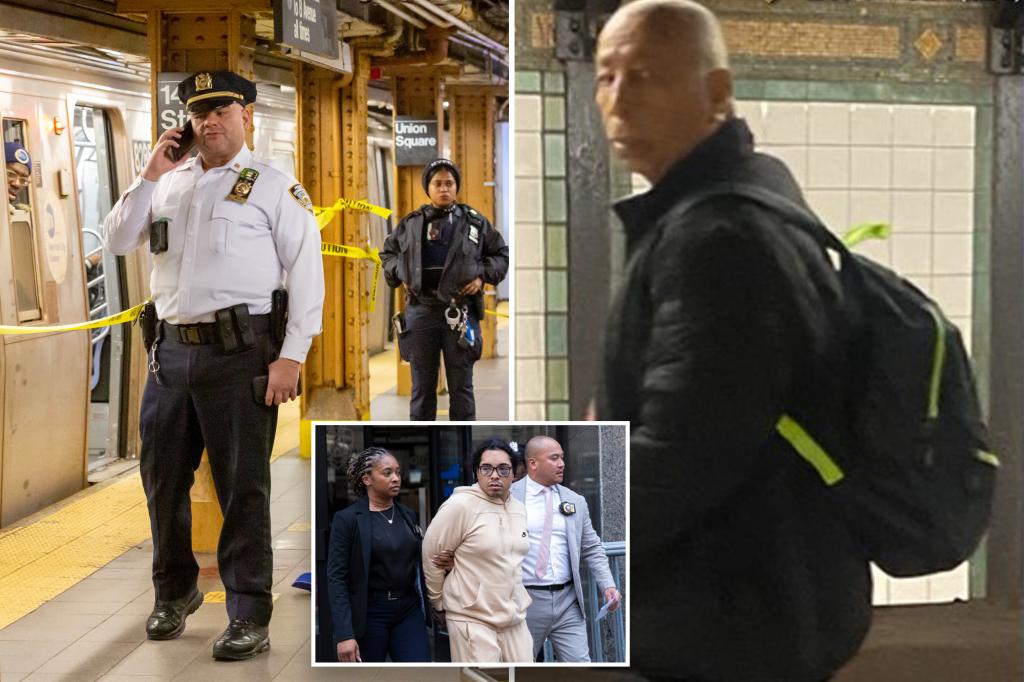The Persistent Problem of Transit Sex Offenders in New York City
In the bustling subway stations of New York City, a disturbing pattern has emerged, highlighting a critical gap in the criminal justice system. Roman Gonzalez, a 67-year-old Staten Island resident, was arrested on April 9 at Union Square subway station for exposing himself and performing a lewd act in front of a female commuter. This marked his sixth arrest for public lewdness and astonishingly, his 32nd arrest overall since 1983. Despite this extensive criminal history spanning over four decades, Gonzalez was released days after his arrest because, under current New York law, such charges are not bail eligible. This case exemplifies a broader systemic issue where repeat offenders continue to victimize transit passengers with minimal consequences, leaving law enforcement frustrated and commuters vulnerable. “How can you be doing this since 1983 and still be out on the street?” one NYPD detective remarked, expressing the exasperation felt by many in law enforcement who repeatedly arrest the same individuals for similar offenses.
The scope of this problem extends far beyond a single offender. According to NYPD data, of the 213 people arrested for transit sex crimes in 2025 so far, 52 have multiple arrests for sex offenses, indicating that recidivism is a significant factor driving these violations. Gonzalez’s criminal career began at age 25 with a weapons possession charge and gradually evolved to include various offenses from petit larceny to grand larceny. By 2005, his crimes took a more disturbing turn with arrests for forcible touching, and by 2016, he faced charges for sexual abuse and public lewdness after an incident on the G line in Astoria, where a 26-year-old woman managed to record video evidence that led to his arrest. Despite these escalating behaviors, Gonzalez has never served prison time in New York State. Even after a February 2023 incident where he allegedly exposed himself on an N train in Manhattan, he received only a desk appearance ticket despite his extensive criminal history, highlighting the limitations of the current system in addressing repeat offenders.
Kenneth Tsui represents another troubling case of a repeat sex offender operating in New York’s transit system. At just 27 years old, Tsui has already accumulated three arrests for sex crimes, two occurring on the subway. His most recent arrest came on June 8 after allegedly sexually abusing a 17-year-old girl at the Puerto Rican Day Parade in Midtown Manhattan. The teenager reported that she “felt something poke her buttocks” and turned to find Tsui standing behind her with his genitals exposed. Quick-thinking, she photographed him, which later helped police identify and arrest him. Officers also discovered Tsui was carrying a box cutter, adding a weapons charge to his case. While Tsui was eventually released on bail set at $10,000 cash or $30,000 bond, his history reveals a pattern of similar behavior, including a September 2023 arrest for allegedly exposing himself to a woman on a 6 train. Though convicted of forcible touching in December 2023, that case was dismissed when Tsui was found unfit to stand trial, and in July 2024, he was classified only as a Level 1 Sex Offender—the lowest designation in the system.
The issue of repeat offenders extends to individuals like Dexter Betancourt, whose behavior demonstrates the escalating nature of these offenses when left unchecked. The 37-year-old was arrested after allegedly attempting to kiss a stranger’s feet after she rejected his advances at the 14th Street-Sixth Avenue station on June 18. According to police reports, Betancourt exposed himself before fleeing on a northbound L train. Despite being charged with forcible touching, he was released without bail and is scheduled to appear in court in September. His criminal record is extensive, with nearly two dozen prior arrests, 11 of which have been sealed. More concerning is the escalating severity of his alleged crimes: in 2013, he reportedly threw a 27-year-old woman to the ground before choking and biting her face on the Upper East Side, and a year earlier, he allegedly grabbed, threw down, and groped a 25-year-old woman. These incidents suggest a pattern of increasingly violent behavior that the current system has failed to address effectively.
Law enforcement officials express growing frustration with what they perceive as a disconnect between policing efforts and judicial outcomes. “It’s clear the NYPD continues to make safety a priority in the transit system, but we need prosecutors and the courts to play their part, ensuring that we stop the revolving door for recidivists,” a high-ranking police source explained, noting that despite these challenges, major crime in transit has decreased by 3% this year. This modest improvement comes amid significant efforts to increase police presence in the subway system, yet officers feel hamstrung by judicial decisions that return repeat offenders to the streets. The frustration is palpable among those tasked with maintaining public safety: “We are doing everything we can by putting more cops on the trains,” another police source stated, “It goes back to the courts. They look at these public lewdness cases and they don’t take them seriously. The court has to punish these guys and keep them in jail longer.”
The recurring patterns in these cases highlight several systemic issues within New York City’s approach to transit sex crimes. First, the non-bail-eligible status of offenses like public lewdness means that even individuals with extensive histories of similar violations are quickly released back into the community. Second, there appears to be insufficient coordination between law enforcement agencies, prosecutors, and courts to address the specific threat posed by repeat offenders. Third, the classification system for sex offenders may not adequately reflect the risk posed by individuals with multiple offenses—as demonstrated by Tsui’s designation as only a Level 1 offender despite multiple arrests. For subway riders, especially women who comprise the majority of victims in these cases, the knowledge that known offenders continue to use the transit system creates an atmosphere of vulnerability and fear. As the NYPD works to increase visible presence on trains and platforms, many officers believe that meaningful reform must include stronger consequences for repeat offenders and better recognition of the serious nature of these violations, which, though often classified as misdemeanors, have profound impacts on victims and public trust in the transit system.











